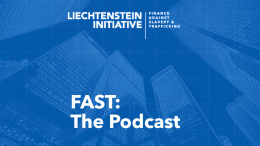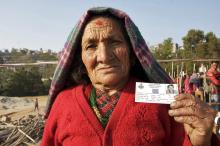A National Risk Assessment (NRA) serves as a critical step to assist countries and financial institutions to better understand the nature of money laundering risks and typologies associated with Human Trafficking and Modern Slavery (HT/MS) – and to inform response strategies and resource prioritization. It serves as a foundational step towards an effective strategy and risk-based approach.
A new UNU-CPR research report analyses available data to identify, assess, and understand how NRAs address HT/MS risks across Sub-Saharan Africa. The report underscores the seriousness of this crime across the continent: an estimated 3.8 million Africans live in conditions of HT/MS, with the number of persons trafficked to different regions around the world significantly higher. Desperate socioeconomic conditions, poverty, high unemployment, demand for cheap labour, mass displacement, conflict, crime, and corruption all contribute to the scourge of HT/MS.
The report, ‘Coverage of Modern Slavery and Human Trafficking in National Risk Assessments within Sub-Saharan Africa,’ demonstrates that countries’ coverage of HT/MS varies. Although 79 per cent of countries in the Sub-Saharan region have conducted NRAs, the inclusion of HT/MS remains inconsistent. While 53 per cent of NRAs in the region address HT/MS in detail, 42 per cent only mention HT/MS at a cursory level. Furthermore, 58 per cent of the analyzed NRAs did not rate the HT/MS risk and in some jurisdictions determining the scale of HT/MS appears to be a challenge.
Generally, the analysis suggests that more needs to be done to ensure the effective detection, investigation, prosecution, seizure, and confiscation of proceeds derived from HT/MS. Although some countries make little or no reference to the level of risk that HT/MS poses, international sources like the Global Slavery Index and the 2022 Trafficking in Persons Report point to high prevalence of HT/MS in those jurisdictions, indicating that the relevant countries may not be aware of the extent of the problem in their jurisdictions and regions, or attention may be directed at other priority crimes.
In other countries, the authorities are broadly aware of the scale and scope of criminal enterprises but understanding of the attendant money laundering risk is not commensurate with the complexity, materiality, and scale of these offences.
Reflecting on the findings of the analysis, the report puts forward several recommendations to ensure that HT/MS and the level of risk it poses are more comprehensively included in NRAs: 1) Promote platforms to share lessons and best practices; 2) Entrench NRAs as foundational tools to identify, assess, and understand HT/MS risks; 3) Adopt agile approaches to NRA processes – review NRAs within appropriate intervals and develop appropriate response strategies; 4) Prioritize the development of typologies and red flag indicators; 5) Ensure timely and effective information sharing, coordination and cooperation; and 6) Ensure the availability of comprehensive statistical data.
‘Coverage of Modern Slavery and Human Trafficking in National Risk Assessments within Sub-Saharan Africa’ can be accessed here.



